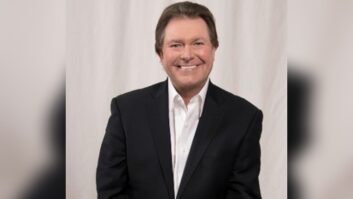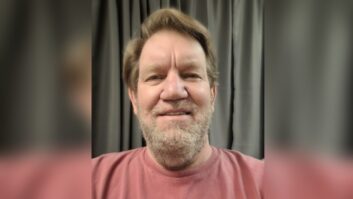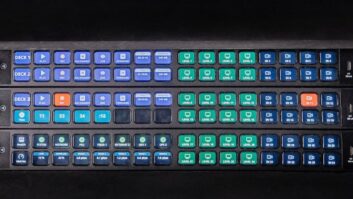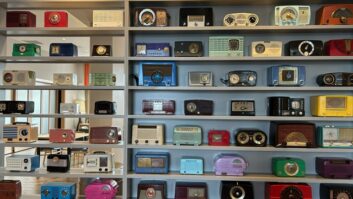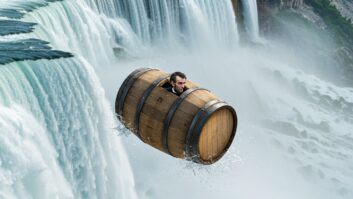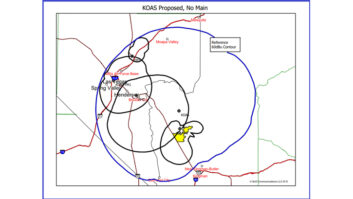POOLESVILLE, Md. Dan Mason has managed some of the largest radio groups in the country in his 30-year radio career. He was an executive with several group owners, including Infinity Radio, CBS Radio and Group W Radio at Westinghouse Broadcasting.
The former president of CBS Radio, later renamed Infinity Radio, is now a consultant to several radio broadcasting companies.
Mason became a consultant to Ibiquity Digital for its HD Radio rollout in 2003. The 54-year-old has been involved with terrestrial radio’s digital technology for about 12 years; two of his former employers, Group W and CBS, were among the early investors in the technology.
He consults with Ibiquity management in promoting the value of IBOC technology and building broader relationships with broadcasters to drive the rollout. In presentations to cluster and group executives with Ibiquity Broadcast Strategic Marketing Manager Don Kelly, Mason talks about the evolution of the technology and potential sales opportunities it presents.
Radio World News Editor/Washington Bureau Chief Leslie Stimson talked with Mason about those activities.
RW: Don Kelly and you have told me that in your presentations you talk about the history of HD Radio and how stations can factor HD Radio into what they’re doing sales-wise.
Mason: We don’t even know all the cool applications that HD Radio is going to bring … because Ibiquity is a technology company. It’s not necessarily a marketing company.
The people who are really going to bring the products to the market are the radio stations, because the radio stations are the marketers. That’s why it’s so important to get this technology out. Because whatever comes out on Day One as far as products will look amazingly different within in a year because there’s going to be many more uses of the spectrum.
RW: Would stations possibly charge extra for certain ads in digital?
Mason: I’ll give you one example. Under datacasting you will be able to, on your LED screen on the radio itself, if you’re running a Coke commercial you’ll be able to see a flash come over your radio, “Buy Coke tonight at Safeway, 99 cents for a six-pack.” Sure, that’s got to be worth something. Maybe an extra 5 percent, 10 percent. What’s that worth?
Or it might say, “Come in between 8 and 9 p.m. for the Blue Light Special at K-Mart.” “Six Cokes for 99 cents,” and you see that flash on your screen.
There’s tons of datacasting applications. Some news and sports stations may choose to run a Sunday Football Scoreboard over their LED screen as part of their datacasting. Obviously, that could be sponsored. And that’s regardless of what you’re hearing on the radio.
RW: What do stations usually ask you?
Mason: The availability of the radios. That’s always the number one question.
I’ve think we’ve gone from a year ago trying to convince radio stations or radio groups that the future was digital and HD. We’ve made that transition. Now, the transition is, “Okay. When do we get our hands on the radios?” That’s the big issue right now.
Just to make myself clear, the aftermarket Kenwood radio is available for the auto. I’m talking about tabletops. Right now there are three new manufacturers of tabletops: Polk Audio, Radiosophy and Boston Acoustics.
RW: From what I can tell with the manufacturers, multicasting surprised them.
Mason: It did. Some of the models were already in production or were ready for production. And it became so obvious that multicasting was going to be the way to go in the future that they had to make those adjustments to kind of “hold the presses,” o to speak.
RW: Other than the radio availability, what do radio stations most care about as far as HD Radio?
Mason: I think there’s a general concern amongst the radio programmers that we, as an industry, really take advantage of the new frontier with all the HD2 stations.
That doesn’t necessarily mean duplicate your competitor. It means be a little brave and bold about trying new formats.
I think there’s a lot of excitement there. There’s maybe some anxiety that you’re really doubling the number of stations on the FM dial. But, at the same time, it’s kind of exciting, about all the new applications, or the possibility of new mixes of music and new formats that can be done on there.
RW: And if radios aren’t coming out until closer to the end of the year, maybe it’s not such a big deal. It is for stations, but maybe not to consumers…
Mason: The radio stations are going to have to drive demand for the consumers by what they hear on the radio (and) how the radio stations sell the concept of HD Radio.
RW: By what they say air about it?
Mason: Absolutely. That’s another thing that we plead with radio broadcasters all the time. Promote this technology ahead of the curve. Don’t wait until these things are eventually on the shelves at Best Buy. You can’t deal with technology like that. You have to promote ahead on technology. …
We (radio) have to create a demand for the radios. We did this for AM radio in the 1920s. We did it for FM in the ’70s. It is critical that manufacturers be successful early on. Now the biggest issue is the question of creative content.
RW: Are stations asking you about the data possibilities and all, and whether they can recoup their costs? What are you telling them about data?
Mason: A few years back there was talk about return on investment. I think the industry has come to grips with being digital is about survival. There is little left in analog in consumer electronics.
As far as data, the opportunities for datacasting are just about anything you can imagine – weather, sports, artist information. If it can be in print, it can be datacast.
RW: What stands out in your mind as memorable in the early development days of the technology?
Mason: In 1992, the NAB conducted their annual radio “Fly In” and for the first time we saw the word “Eureka” on the agenda. After that presentation, the radio group heads understood the urgent need to create our own digital solution to AM and FM radio.
Three companies came forward with developmental money: Westinghouse, CBS and Gannett. Thank goodness for these three companies. They probably knew that money wasn’t ever coming back, but the industry needed a solution and fast.
Engineers went to work; and amazingly, 10 years later, in 2002, the IBOC technology was finally approved by the FCC, as the digital standard in the U.S.
Imagine how difficult of a road that was for competing engineers to agree on a technical solution. If that wasn’t hard enough, throw in the FCC and receiver manufacturers.
